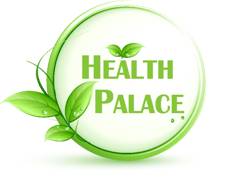How to Use Essential Oils? | 7 Benefits of Essential Oils for Health
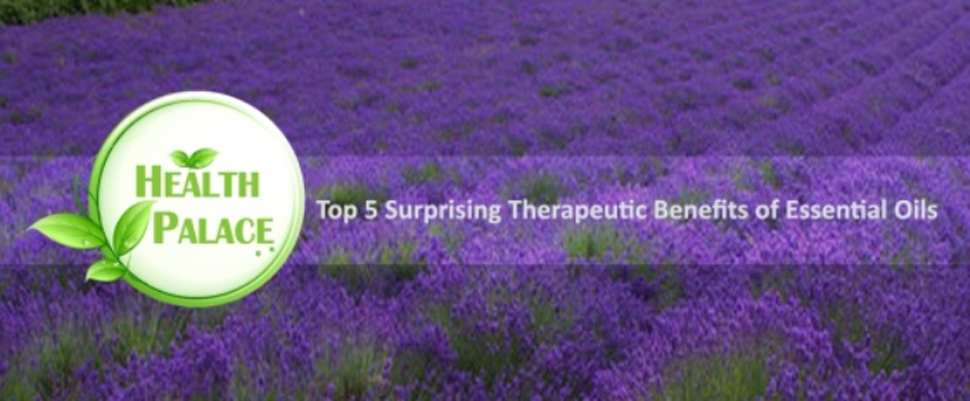
Surprising therapeutic and healing benefits of essential oils
Plant oils have been used for many years for their wide variety of benefits and purposes. Research from all over the world has supported the usage of essential oils not only for their aroma, but also for their versatile therapeutic benefits. Essential oils are used to make perfumes, to add flavour to the foods and drinks, to preserve foods, for antimicrobial properties, as potent pesticides, as natural repellents, for antioxidant benefits, as anti-inflammatory, to reduce stress and anxiety, and even to fight cancer.
While anecdotal evidence and the traditional use of plants as medicine provides some information on what essential oil or plant could be used for specific medical condition and based on that many oils are used for different properties, it is important to find the scientific application of each to be able to use them in the most effective way. This article explores a number of the science based surprising benefits of some essential oils.
Essential oils are sourced from leaves, stems, or roots of plants that are known for their health benefits. Nowadays with the progress of science, essential oils are used widely to prevent and treat human disease. More research has provided more information on the possible role and the method of action of theses natural products in respect to prevention and treatment for cardiovascular disease like hardening of arteries (atherosclerosis) and blood clotting (thrombosis), and cancer growth; also on their antibacterial, viral, fungal, and anti-diabetic benefits. In addition, essential oils are considered for their natural skin penetration ability (trans-dermal treatments) and for their effects via inhalation.
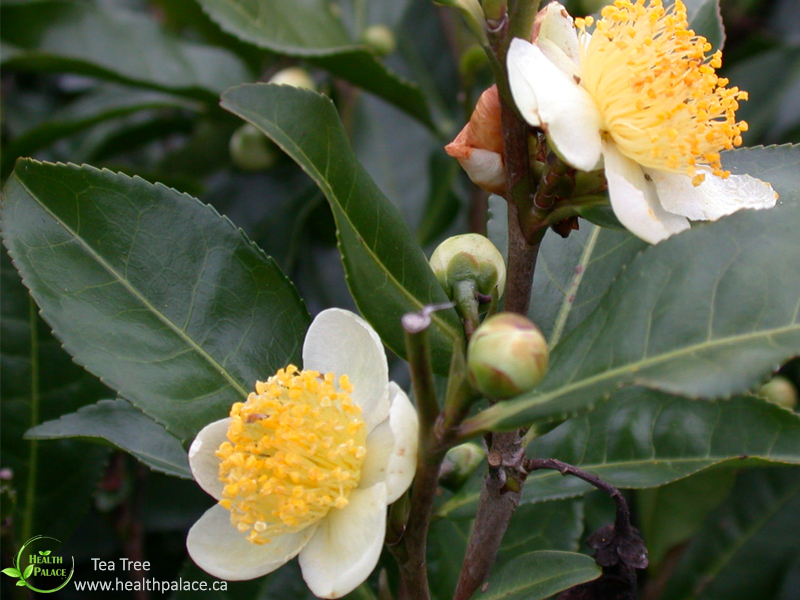
Anti-microbial benefits of essential oils:
A study from department of microbiology at the University of Western Australia has examined the antimicrobial activity of 52 plant oils against different spices of infectious bacteria and yeast such as: E. coli, Salmonella, Klebsiella, Psudomunas, Staphylococcus aureus, and Candida albicans.
Results found Oregano, Lemongrass and Bay at higher concentration were effective against all of the 6 pathogens in comparison with other oils. Carrot, patchouli, sandalwood and vetiver inhibited Gram-positive bacteria and C. albicans; While, Myrrh and Cypress only were effective against Gram-positive bacteria , and Mandarine found to be effective only against Candida. Carrier oils including Sweet Almond, Evening primrose, Apricot, Pumpkin, Macadamia, and Clary Sage essential oil failed to inhibit any of those 6 pathogens. Among these pathogens Candida albicanse and Staph. aureus found the most susceptible while Pseudomonas was the most resistant.
This study confirmed the anti-microbial benefits of some essential oils against a group of pathogens; however, some are found toxic to be used as food preservative, or for oral consumption.
Other study assessed the antimicrobial benefits of Lavender (Lavandula angustifolia) in combination with 45 other essential oils to find the most effective combination.The research found the best results are obtained when Lavender was combined with Cinnamomum zeylanicum or with Citrus sinensis, against C. albicans and Staphylococcus aureus . In the ratio of 1:1 adding lavender to 75% of the other essential oils showed either additive or synergistic results.
Several essential oils are reported to demonstrate great antifungal property, suggesting that these natural oils could provide potential alternative treatment for fungal infection specially for topical applications. Several essential oils including Lavender, Lemongrass, Tea tree, and Oregano have shown to damage the cell walls of both bacteria and fungi.
Different dilutions of Tea tree (Leptospermum petersonii ) oil was used against Candida albicanse and results found Tea tree oil at the 0.2% dilution inhibited the growth of the Candida alb. 100 % within 30 minutes; while, at the dilution of 0.002% it inhibited the growth of Candida alb. about 92 % within 24hours. Microscopic exam further proved the varying degrees of modification, destruction and degeneration of the Candida alb.'scell wall.
Comparative study on the popular antifungal drugs and tea tree oil found drugs such as micafungin, caspofungin, voriconazole, nyastatin and amphotericin at the concentrations range of (0.003-0.5 mcg/ ml ) killed 99% of Candida alb within 4-24 hours, while tea tree oil at the concentration of 160 mcg/ mlkilled 99% of the Candida alb. within 30 minutes -1 hour after exposure.
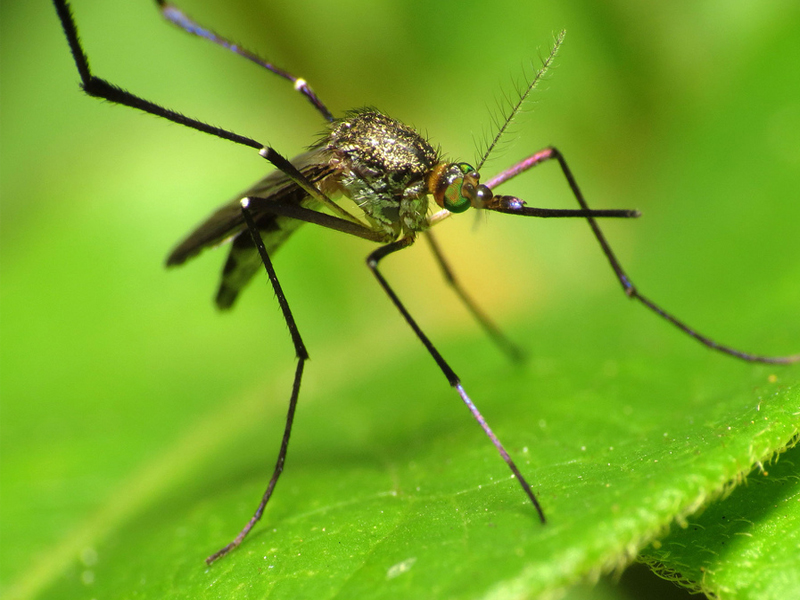
Repellency effect of essential oils:
Due to development of chemicals, the use of the plant products against pests decreased during past decades. However, by increasing concerns regarding public health and environmental impacts of chemicals, natural compounds now have higher potential of being utilized.
A study used 11 essential oils against 3 types of mosquitoes including the Malaria vector ( Anopheles stephensi (Liston)), yellow fever mosquito (Aedes aegypti (Linnaeus)), and the filariasis and encephalitis vector (Culex quinquefasciatus (Say) (Diptera: Culicidae)) using human volunteers to figure out the protection time and repellency.
Results found the 5 most effective oils to be Cajeput (Melaleuca leucadendron), Catnip ( Nepeta cataria), Litsea (Litsea cubeba ), Niaouli (Melaleuca quinquenervia), and Violet ( Viola odorata) by providing the protection time of 8 hours at 100% repellency against all 3 types of mosquitoes.
Another study from Society of Chemical Industry was conducted for potential repellency of the 21 popular essential oils against the social wasps. Among those oils anise, citronella, clove, geranium, fennel seed, lavender, lemongrass, patchouli, pennyroyal, peppermint, Roman chamomile, rosemary, sage, spearmint, thyme, wintergreen, and ylang ylang showed a significant repellency. In addition two combinations of (clove, geranium, lemongrass and rosemary) and(clove, geranium and lemongrass)totally blocked the attraction of the wasp Sp.
Antioxidant activity of the essential oils:
Groups of researchers have compared and analysed the antioxidant activity of 6 common essential oils by measuring their capacity for scavenging free radicals. Six oils used in this study were including grapefruit (Citrus paradise ), frankincense (Boswellia carteri), lavender (Lavendular angustifolia ), lemon (Citrus limon), peppermint (Mentha piperita), and rosemary (Rosmarius officinalis ). The highest free radical scavenging property was observed from Lavender.
Sedative effects of essential oils upon inhalation:
This research was conducted to find the influence of sedative essential oils on mice. Mice motility was decreased upon their exposure to fragrance compounds and essential oils inhalants. Also, the same result was observed when mice where artificially induced to the over anger by caffeine. Minute amount of fragrance compounds were found in the mice blood samples after being 1 hour exposed to inhaling sedative oils. The result concluded the sedative or stimulating effects of the aromatherapy on the individuals' behaviours.
Immunomodulatory activity of essential oils:
This study analysed the steam distilled driven frankincense essential oil (3%) and its many chemical compounds. Results revealed a significant immunostimulant activity for frankincense affecting 90% of the lymphocytes by increasing lymphocytes proliferation.
Potential anti cancer activities of Essential oils:
An in vitro research investigated chemical compounds and the oils from Frankincense and Myrrh separately and combined on five different tumor cells including Breast (MCF-7), hepatocellular (HepG2) carcinomas, cervical (HeLa), skin (HS-1) and small cell lung (A549) cancers.
Results showed significant inhibitory effect from Myrrh alone in comparison to Frankincense and the mixture of the both oils. MCF-7 cells demonstrated higher apoptosis (self killing mechanism) under myrrh treatment. In addition the Breast cells showed higher sensitivity to myrrh. The combination of the two oils did not change the efficacy of the treatment.
In the same study, within the chemical compounds of these two oils, the cell lines were more sensitive to β-elemene compared with frankincense and myrrh oils, indicating that β-elemene is important for the antitumor activity of the frankincense and myrrh essential oils.
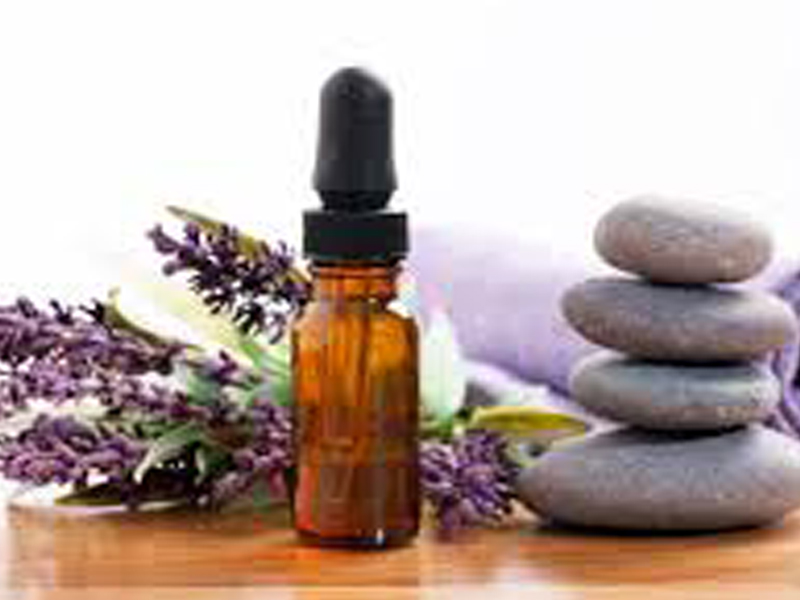 Safety of the essential oils:
Safety of the essential oils:
For those of you who like to experience real benefit from essential oil, avoid those that are called fragrance oil or perfume oil as they are mostly synthetic. Instead look for Pure essential oil, 100% essential oil or those products that use pure and 100 % essential oils to provide the desired health benefits.
While many of the essential oils are well tolerated, especially when compared with drugs, to be safe always follow the manufacturer instructions. Some of the oils are toxic and can not be ingested, or may be too strong to be directly applied to the skin or come in contact with mucus membranes. For ingesting only use those that are particularly made for oral intake and follow the instructions. For topical application some of the essential oils should be diluted with a carrier oil to prevent skin irritation.
Articles and products featured by Health Palace are collected from a variety of sources and are provided as a service by Health Palace. These newsletters, while of potential interest to readers, do not necessarily represent the opinions nor constitute the advice of Health Palace. Presented materials are only for information purposes and do not intent to treat, cure, or prevent any disease.
References:
- Jones, F.A.1996Herbs – useful plants. Their role in history and today. European Journal of Gastroenterology and Hepatology , 8, 12271231.
- Carson, C.F., Hammer, K.A., Riley, T.V.1995Broth micro-dilution method for determining the susceptibility of Escherichia coli and Staphylococcus aureus to the essential oil of Melaleuca alternifolia (tea tree oil).Microbios, 82, 181185
- Deans, S.G. & Ritchie, G.1987Antibacterial properties of plant essential oils. International Journal of Food Microbiology , 5, 165180.
- Lawless, J.1995. The Illustrated Encyclopedia of Essential Oils . Shaftesbury, UK. Element Books Ltd.
- Mann, C.M. & Markham, J.L.1998A new method for determining the minimum inhibitory concentration of essential oils. Journal of Applied Microbiology, 84, 538544.
- Weckesser S, Engel K, Simon-Haarhaus B, et al: Screening of plant extracts for antimicrobial activity against bacteria and yeasts with dermatological relevance. Phytomedicine. 14:508–516. 2007.
- Department of Pharmacy and Pharmacology, Faculty of Health Sciences, University of the Witwatersrand, Parktown, Johannesburg 2193, South Africa
- Department of Pharmaceutical Sciences, Faculty of Science, Tshwane University of Technology, Pretoria 0001, South Africa
- 2010 International Society for Human and Animal Mycology
- KalembaD, KunickaA . Antibacterial and antifungal properties of essential oils. Curr Med Chem 2003;10:813-819
- Pina-VazC, RodriguesA, PintoE, et al. Antifungal activity of Thymus oils and their major compounds. J Eur Acad Dermatol Venereol 2004;18:73-78.
- CoxS, MannC, MarkhamJ, et al . The mode of antimicrobial action of the essential oil of Melaleuca alternifolia (tea tree oil). J App Micro 2000;88:170-175.
- de BillerbeckV, RoquesC, BessiereJ, et al. Effects of Cymbopogon nardus (L.) W. Watson essential oil on the growth and morphogenesis of Aspergillus niger . Can J Microbiol 2001;47:9-17.
- HelalG, SarhanM, Abu ShahlaANK, et al. Effects of Cymbopogon citratus L. essential oil on the growth, lipid content and morphogenesis of Aspergillus niger ML2-strain. J Basic Microbiol 2006;46:456-469.
- LambertR, SkandamisP, CooteP, et al. A study of the minimum inhibitory concentration and mode of action of oregano essential oil, thymol and carvacrol . J Appl Micro 2001;91:453-462.
- HoodJ. Antimicrobial activity of Australian native plant essential oils. Honours thesis . Charles Sturt University; 2001.
- HoodJ, WilkinsonJ, CavanaghH. Evaluation of common antibacterial screening methods utilized in essential oil research . J Ess Oil Res 2003;15:428-433.
- HammerK, CarsonC, RileyT. In-vitro activity of essential 445 oils, in particular Melaleuca alternifolia (tea tree) oil and tea tree oil products against Candida spp. J Antimicrob Chemo 1998;42:591-595.
- Mimica-DukicN, KujundzicS, SokovicM, et al. Essential oil composition and antifungal activity of Foeniculum vulgare Mill. obtained by different distillation conditions . Phytother Res 2003;17:368-371.
- TampieriM, GaluppiR, MacchioniF, et al. The inhibition of Candida albicans by selected essential oils and their major components. Mycopathologia 2005;159:339-345.
- HammerK, CarsonC, RileyT. Antifungal activity of the components of Melaleuca alternifolia (tea tree) oil. J Appl Micro 2003;95:853-860.
- de Souza E, de Oliveira LimaE, de Luna FreireK, et al . Inhibitory action of some essential oils and phytochemicals on the growth of various moulds isolated from foods . Braz Arch Biol Tech 2005;48:245-250.
- ErnstE, RolingE, PetzoldR, et al. In vitro activity of micafungin (489 FK-463) against Candida spp.: microdilution, time-kill, and postantifungal-effect studies . Antimicrob Agents Chemo 2002;46:3846-3853.
- KlepserM, MaloneD, LewisR, et al. Evaluation of voriconazole pharmacodynamics using time-kill methodology. Antimicrob Agents Chemo 2000;44:1917-1920.
- GundersonS, HoffmanH, ErnstE, et al. In vitro pharmacodynamic characteristics of nystatin including time-kill and postantifungal effect . Antimicrob Agents Chemo 2000;44:2887-2890.
- KrishnanSM, EK, ChandrasekarP . A comparative study of fungicidal activities of voriconazole and amphotericin B against hyphae of Aspergillus fumigatus. J Antimicrob Chemo 2005;55:914-920.
- ZambonelliA, D'AulerioZ, BianchiA, et al. Effects of essential oils on phytopathogenic fungi in vitro . J Phytopathol 1996;144:491-494.
- CavanaghH. Antifungal activity of the volatile phase of essential oils: a brief review . Nat Prod Comm 2007;2:1-3.
- EdrisA, FarragE. Antifungal activity of peppermint and sweet basil essential oils and their major aroma constituents on some plant pathogenic fungi from the vapour phase . Nahrung/Food 2003;47:117-121.
- Barnard D (1999) Repellency of essential oils to mosquitoes (Diptera: Culicidae). J Med Entomol 36:625–629
- Ansari MA, Vasudevan P, Tandon M, Razdan RK (2000) Larvicidal and mosquito repellent action of peppermint (Mentha piperita) oil. Bioresour Technol 71:267–271
- Chavasse DC, Yap HH (1997) Chemical methods for the control of vectors and pests of public health importance. Geneva, Switzerland, WHO/CTD/WHOPES/97.2.129 p
- Curtis CF, Hill N (1988) Comparison of methods of repelling mosquitoes. Entomol Exp Appl 49:175–179
- Das NG, Nath DR, Baruah I, Talukdar PK, Das SG (1999) Field evaluation of herbal mosquito repellents. J Commun Dis 31(4):241–245
- Eisner T, Eisner M, Aneshansley DJ, WuC, Meinwald J (2000) Chemical defense of the mint plant, Teucrium marum (Labiatae). Chemoecology 10:211–216
- Gupta RK, Rutledge LC (1989) Laboratory evaluation of controlled-release repellent formulations on human volunteers under three climatic regimens. J Am Mosq Control Assoc 5:52–55
- Jantan I, Zaki ZM (1998) Development of environment-friendly insect repellents from the leaf oils of selected Malaysian plants. ASEAN Review of Biodiversity and Environmental Conservation, May 1998
- Jilani G, Saxena CR, Rueda BP (1988) Repellent and growth-inhibiting effects of turmeric oil, sweetflag oil, neem oil, and margosan-O on red flour beetle (Coleoptera: Tenebrionidae). J Econ Entomol 81:1226–1230
- Peterson C, Coats J (2001) Insect repellents—past, present and future. Pesticide outlook—August 2001
- Schreck CE, McGovern TP (1989) Repellents and other personal protection strategies against Aedes albopictus. J Am Mosq Control Assoc 5:247–252
- Zhu BCR, Henderson G, Chen F, Fei H, Laine RA (2001) Evaluation of vetiver oil and seven insect-active essential oils against the Formosan subterranean termite. J Chem Ecol 27:1617–1625
- Phytotherapy Research Volume 21, Issue 4, pages 308–323, April 2007
- Afoulous S, Ferhout H, Raoelison EG, et al: Helichrysum gymnocephalum essential oil: chemical composition and cytotoxic, antimalarial and antioxidant activities, attribution of the activity origin by correlations. Molecules. 16:8273–8291. 2011.
- Zeitschrift für Naturforschung C. Volume 58, Issue 3-4, Pages 230–238, ISSN (Online) 1865-7125, ISSN (Print) 0939-5075, DOI: 10.1515/znc-2003-3-416, June 2014
- Mikhaeil BR, Maatoog GT, Badria FA and Amer MM: Chemistry and immunomodulatory activity of frankincense oil. Z Naturforsch C. 58:230–238. 2003.
- Chevrier MR, Ryan AE, Lee DY, et al: Boswellia carterii extract inhibits TH1 cytokines and promotes TH2 cytokines in vitro. Clin Diagn Lab Immunol. 12:575–580. 2005.
- Sharma ML, Khajuria A, Kaul A, et al: Effects of salai guggal ex-Boswellia serrata on cellular and humoral immune responses and leukocyte migration. Agents Actions. 24:161–164. 1988.
- Su S, Wang T, Duan JA, et al: Anti-inflammatory and analgesic activity of different extracts of Commiphora myrrha. J Ethnopharmacol. 134:251–258. 2011.
- Shoemarker M, Hamilton B, Dairkee SH, Cohen I and Campbell MJ: In vitro anticancer activity of twelve Chinese medicinal herbs. Phytother Res. 19:649–651. 2005.
- Massoud A, El Sisi S, Salama O and Massoud A: Preliminary study of therapeutic efficacy of a new fasciolicidal drug derived from Commiphora molmol (myrrh). Am J Trop Med Hyg. 65:96–99. 2001.
- Banno N, Akihisa T, Yasukawa K, et al: Anti-inflammatory activities of the triterpene acids from the resin of Boswellia carteri. J Ethnopharmacol. 107:249–253. 2006.
- O'Toole C, Price ZH, Ohnuki Y and Unsgaard B: Ultrastructure, karyology and immunology of a cell line originated from a human transitional-cell carcinoma. Br J Cancer. 38:64–76. 1978.
- Tipton DA, Lyle B, Babich H and Dabbous MKh: In vitro cytotoxic and anti-inflammatory effects of myrrh oil on human gingival fibroblasts and epithelial cells. Toxicol In Vitro. 17:301–310. 2003.
- El Ashry ES, Rashed N, Salama OM and Saleh A: Components, therapeutic value and uses of myrrh. Pharmazie. 58:163–168. 2003.
- Shoemarker M, Hamilton B, Dairkee SH, Cohen I and Campbell MJ: In vitro anticancer activity of twelve Chinese medicinal herbs. Phytother Res. 19:649–651. 2005.
- Zhan YH, Liu J, Qu XJ, et al: β-Elemene induces apoptosis in human renal-cell carcinoma 786-0 Cells through inhibition of MAPK/ERK and PI3K/Akt/mTOR signalling pathways. Asian Pac J Cancer Prev. 13:2739–2744. 2012.
Recent Posts
-
Macular degeneration
Macular degeneration which is commonly known as age-related macular degeneration (AMD /ARMD), is a m …7th Sep 2025 -
Maintain A Healthy Heart Rhythm With Integrative Medicine
Maintain A Healthy Heart Rhythm With Integrative Medicine;Usually, abnormal heart rate or arrhythmi …4th Feb 2021 -
How to Prevent Gallstones from Forming? | Natural Supplements for Gallstones
How To Prevent Gallstone Formation?Gallstones are hard deposits made of cholesterol or bilirubin f …4th Mar 2020
